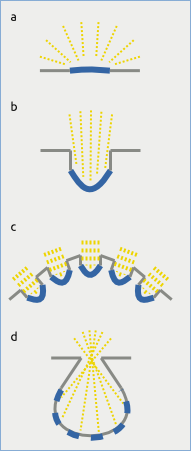Update Jul 18 2011: SInce OpenSesame 0.24 has been released, the links below are no longer current.
It took some time, but we have finally created experimental Mac OS packages for OpenSesame (and when I say "we", I actually mean Daniel Schreij). It appears to work quite well, with the exception of two notable bugs (that have been discovered so far): The program crashes when running in window mode (fullscreen works fine) and you can't open Finder from the file pool.
There are two versions, for Mac OS Leopard (10.5) and Snow Leopard (10.6) respectively.
- Download OpenSesame 0.23 for Mac OS Leopard (10.5) (Outdated, 0.24 has been released)
- Download OpenSesame 0.23 for Mac OS Snow Leopard (10.6) (Outdated, 0.24 has been released)
Please note that these packages are still experimental and have not been as extensively tested as the Windows and Linux packages. If you find bugs or wish to provide feedback, please let us know!
What to expect for OpenSesame 0.24
On a semi-related note, development of the next version of OpenSesame (0,24 Cody Crick) is well under way. I want to further polish the user experience and fix all bugs that have come up. But far more exciting than these incremental changes is the fact that the "back-end" will be decoupled from the user interface. Right now, OpenSesame uses PyGame to handle all display, sound and input operations. PyGame is a fine and reliable back-end, but it …



![[i]Phronima sedentaria[/i], a midwater crustacean. The red bits are the retina of the eyes. The top of the head is formed by the lenses of the dorsal eyes. The tiny “cheeks” are the lenses of the ventral eyes. ([url=http://www.bogleech.com/bio-crusty.html]source[/url])](/images/stories/blog/animals/phronima_sedentaria.png) particularly striking example of specialized vision can be found in marine animals that live about 200 to 800 meters beneath the surface (Land, 2000; Land & Nilsson, 2002). A little bit of sunlight still penetrates to these depths. Sunlight obviously comes from above, so these midwater creatures live in an environment where everything below them is pretty much completely dark and everything above them is, during daytime at least, relatively light. This is a peculiar environment to live in and it has given rise to a peculiar type of vision.
particularly striking example of specialized vision can be found in marine animals that live about 200 to 800 meters beneath the surface (Land, 2000; Land & Nilsson, 2002). A little bit of sunlight still penetrates to these depths. Sunlight obviously comes from above, so these midwater creatures live in an environment where everything below them is pretty much completely dark and everything above them is, during daytime at least, relatively light. This is a peculiar environment to live in and it has given rise to a peculiar type of vision.![A fossil Trilobite (source: [url=http://commons.wikimedia.org/wiki/File:LeggedTrilobite2.jpg]Wikimedia Commons[/url])](/images/stories/blog/animals/trilobite.jpg) Nowadays having eyes is nothing special, but it wasn't always like that. Although life has been around for billions of years, it was not until the
Nowadays having eyes is nothing special, but it wasn't always like that. Although life has been around for billions of years, it was not until the  So what happened in between? There is no fossil evidence, but it's a good bet that the first “eye” was simply a light sensitive patch on the body of some lucky mutant (see (a) in the figure on the right). Of course, such a patch offers very little in terms of resolution and directionality …
So what happened in between? There is no fossil evidence, but it's a good bet that the first “eye” was simply a light sensitive patch on the body of some lucky mutant (see (a) in the figure on the right). Of course, such a patch offers very little in terms of resolution and directionality …